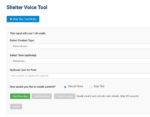Creating an engaging online presence is essential for animal shelters and rescues. This article focuses on content to make your website not only more informative but also streamline your adoption process, donation requests, and overall awareness.
Here’s a breakdown of useful web content. Your site might not have all this information right now, but use this as a checklist to inventory your existing content for potential improvement.
About Us Section:
This website section helps your organization connect with visitors by sharing your shelter’s story, values, and the people behind the mission.
- Mission Statement: Clearly articulate your organization’s mission and values.
- History: Share the background and evolution of the shelter or animal rescue.
- Team Introduction: Introduce key staff members and volunteers. If you add this type of information, do not include too much private information.
Adoption Information:
Providing clear information on the adoption process and showcasing available pets makes it easier for visitors to understand how they can adopt, and helps them connect with potential new family members.
- Adoption Process: Outline the steps involved in adopting a pet.
- Available Pets: Showcase profiles of your cats and dogs available for adoption, including photos, age, breed, health status, and personality traits.
- Success Stories: Share recent stories about animals that have found their forever homes.
Volunteer and Donation Opportunities:
This section is crucial for garnering community support, whether through time or resources, ensuring the sustainability and growth of your shelter.
- How to Help: Detail ways people can volunteer, donate, or support the shelter.
- Wish List: List items the shelter needs, like food, toys, bedding, and cleaning supplies.
- Fundraising Events: Promote upcoming events and explain how these support the shelter.
Care and Education:
Educating visitors on proper pet care and health ensures that they are well-prepared for the responsibilities of pet ownership, leading to happier, healthier lives for the animals.
- Pet Care Tips: Provide advice on feeding, grooming, training, and general care for dogs and cats.
- Health Information: Educate about common health issues, vaccinations, and spaying/neutering. This can include schedules and information about illnesses and diseases that can be prevented with proper veterinary care.
- Behavior Guidance: Offer resources on understanding and managing pet behavior.
News and Updates:
Regular updates keep your community engaged and informed about your shelter’s activities, success stories, and needs. This help improve involvement and connection with supporters.
- Blog or News Section: Regular updates on shelter activities, new arrivals, and general news.
- Newsletter Sign-Up: Encourage visitors to subscribe to a newsletter for ongoing updates.
Interactive Features:
Interactive elements like live cams or quizzes engage visitors more deeply with your shelter, making the website experience memorable and enjoyable.
- Live Cams: Offer live streams of pets in the shelter. You can also record and save video to your YouTube channel and embed video throughout your site.
- Pet Matching Quiz: Create a fun quiz or checklist to help potential adopters find the right pet.
Legal and Policy Information:
Clearly stating your policies and legal information helps manage adopters’ expectations and ensures compliance with local laws and regulations.
- Adoption Policies: Clarify policies regarding returns, out-of-area adoptions, etc.
- Legal Requirements: Inform about legal obligations for pet owners in the area and link out to relevant municipal web pages.
Community Involvement:
Highlighting your involvement with the local community and educational initiatives showcases your commitment to animal welfare beyond the shelter and encourages community participation.
- Local Partnerships: Highlight collaborations with local businesses and organizations.
- Educational Programs: Promote educational initiatives like school visits or community workshops.
Contact Information:
Providing comprehensive contact information ensures that visitors can easily reach out for support, questions, or emergencies, enhancing trust and accessibility.
- Detailed Contact Info: Provide phone numbers, email addresses, and physical location.
- Social Media Links: Include links to the shelter’s social media profiles on your contact page. You’ll want to include these links in your site footers, as well.
FAQ Section:
Answer common questions about pet adoption, volunteer work, and shelter operations. This saves time for both visitors and your staff.
Emergency Resources:
Provide information on what to do in case of a lost pet, found stray, or animal emergency. Offering guidance for emergencies or unexpected situations with pets helps make your organization a reliable resource in times of need.
Expert tip: Make sure you link between pages where relevant. That makes it easier to find specific content and improves your website’s SEO.
Including comprehensive information about your organization, your services, and how to care for pets makes your website a hub of useful information. It adds credibility to your organization and provides a way to make sure that all adoption parties know what to expect in the process and what is expected of them.






0 Comments